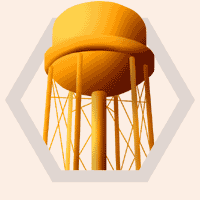Vision & Mission | Background | ICIS People | Director's Message | ICIS - Publications & Activities
The Institute
|
|
posted: |
|
October 27, 2001 Rutherford H. Platt Abstract Nine million people in New York City and nearby areas enjoy access to abundant, clean, and inexpensive drinking water from that city’s farflung and internationally-admired water supply system. As early as the 1840s, New York constructed the original Croton River Dam and Aqueduct to divert water 40 miles southward to the fast-growing metropolis. As enlarged between 1885 and 1911, the Croton River system east of the Hudson River today provides about 10-12 percent of New York’s water. The other 90 percent is drawn from sources west of the Hudson River in the Catskill Mountains and the headwaters of the Delaware River. Five large reservoirs impounding the runoff from nearly 1,600 square miles of watershed discharge into two aqueducts (the Catskill and the Delaware) which plunge beneath the Hudson River enroute to Kensico Reservoir, near White Plains, New York. At Kensico, both streams of water from west of Hudson are combined, stored briefly, treated with chlorine, and released to the city distribution system. Altogether, the New York City System provides about 1.3 billion gallons per day (Hazen and Sawyer, 1997). 
|
|
|
|